ch 2 and 3 anatomy and physiology of respiration
1/45
There's no tags or description
Looks like no tags are added yet.
Name | Mastery | Learn | Test | Matching | Spaced |
|---|
No study sessions yet.
46 Terms
bony thorax
Posterior-Vertebral column
Anterior-Sternum, costal cartilage
Lateral-Ribs
Superior-Scapula, clavicle
Inferior-Pelvic girdle
______________ is suspended from the vertebral column
manubrium
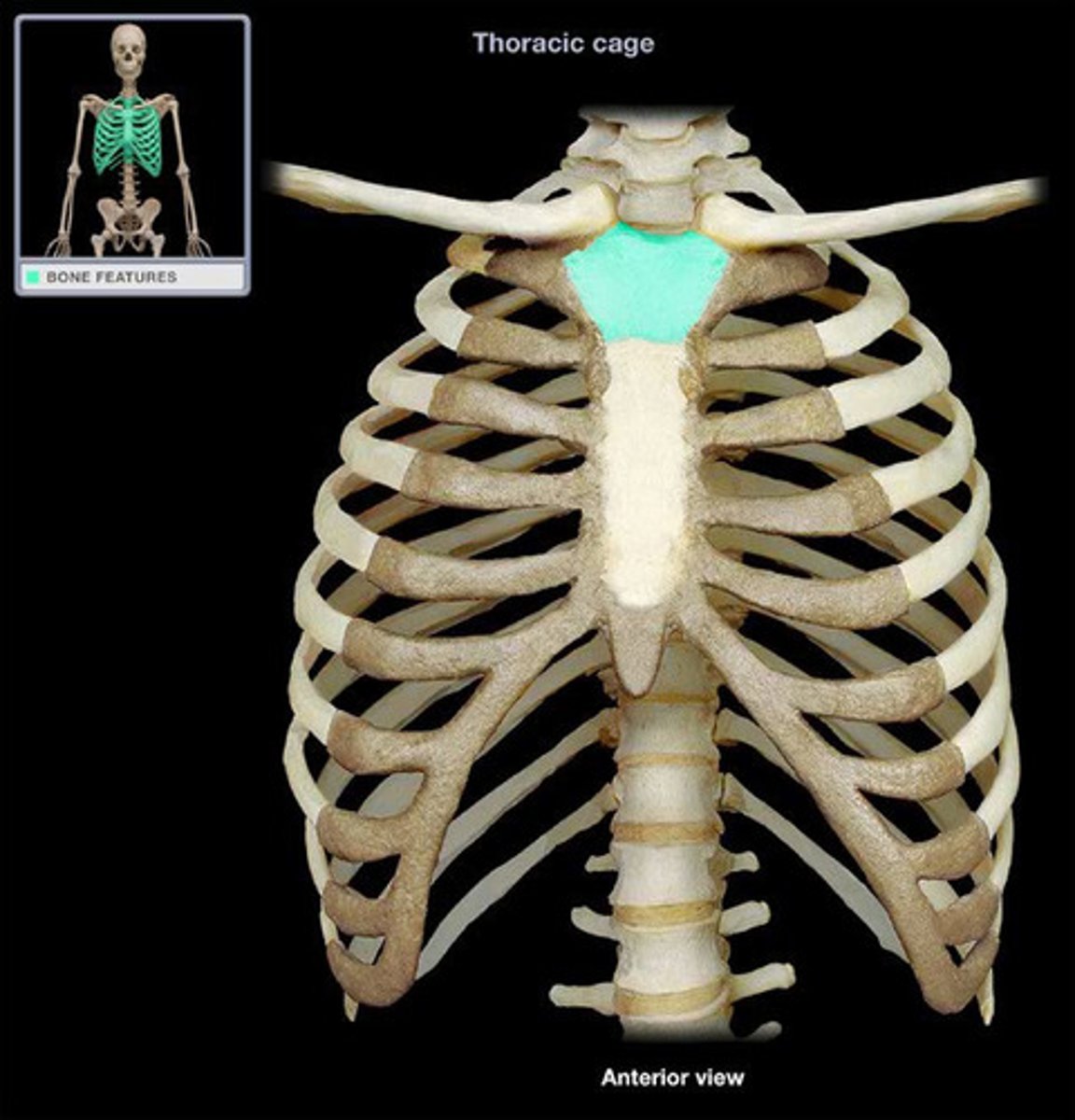
bony thorax
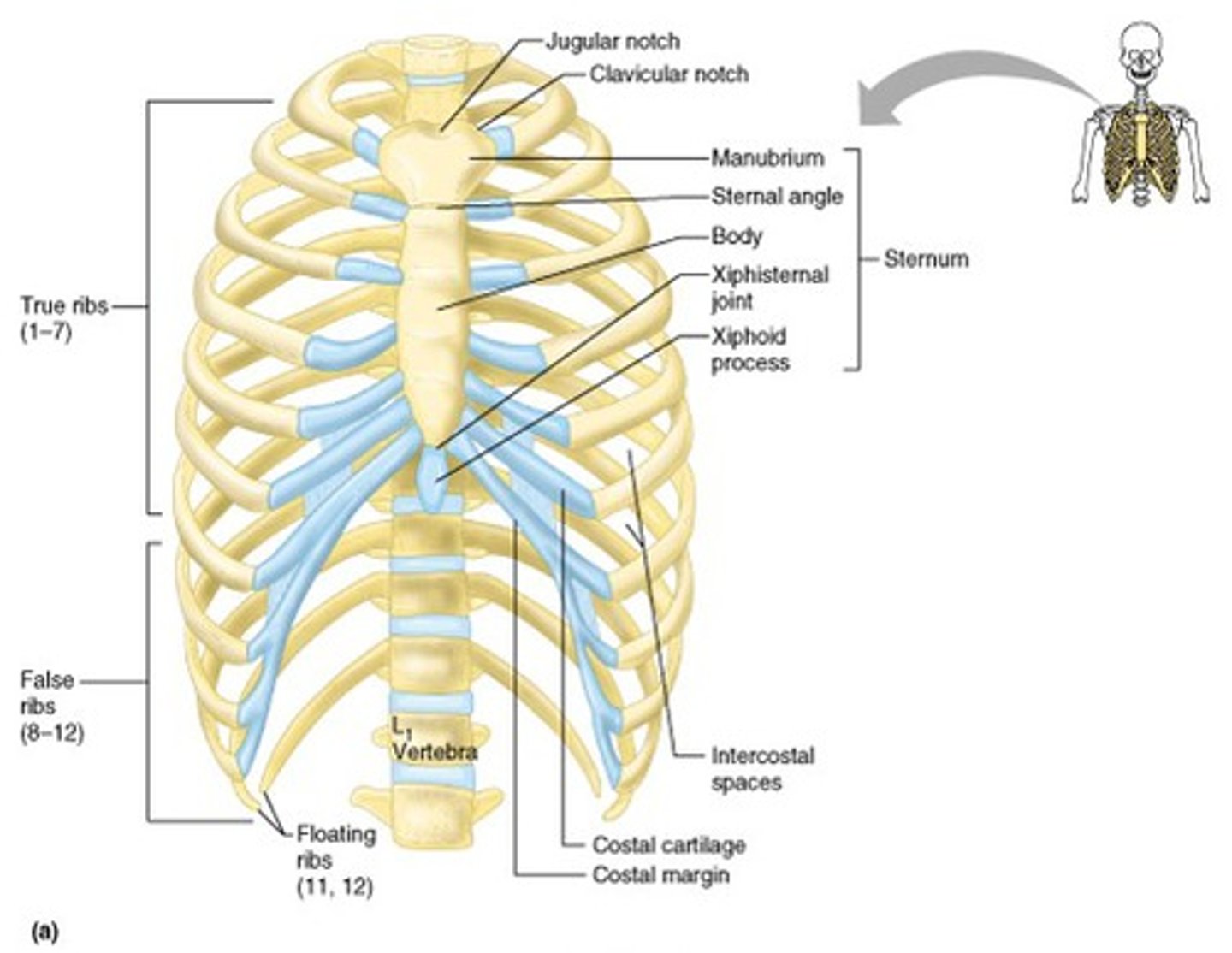
vertebral column
Part of the bony thorax
Composed of 32-33 segments of bone
Made of vertebra (plural, vertebrae)
Vertebrae numbered sequentially by section from superior to inferior
vertebral column
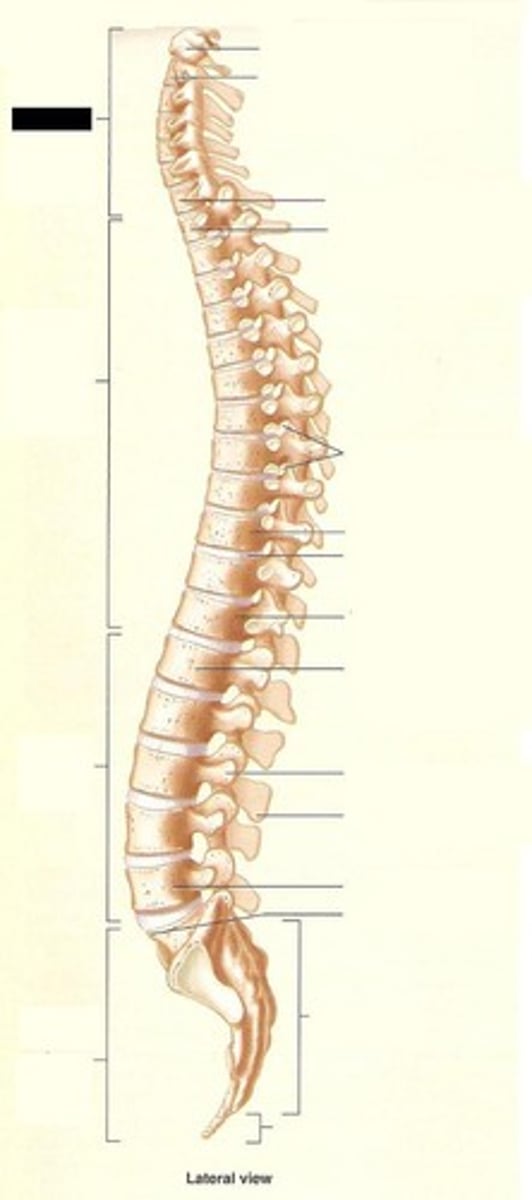
how many cervical vertebrae
7
how many thoracic vertebrae
12
how many lumbar vertebrae
5
how many sacral vertebrae
5
how many coccyx
1-4 fused
pectoral girdle
Also called shoulder girdle or scapular girdle
Clavicle (anteriorly) and scapula (posteriorly)
Clavicle allows for projection of the scapular away from the thoracic cave
Fixation, stabilization of pectoral girdle needed for forced expiration and fixed core
pectoral girdle
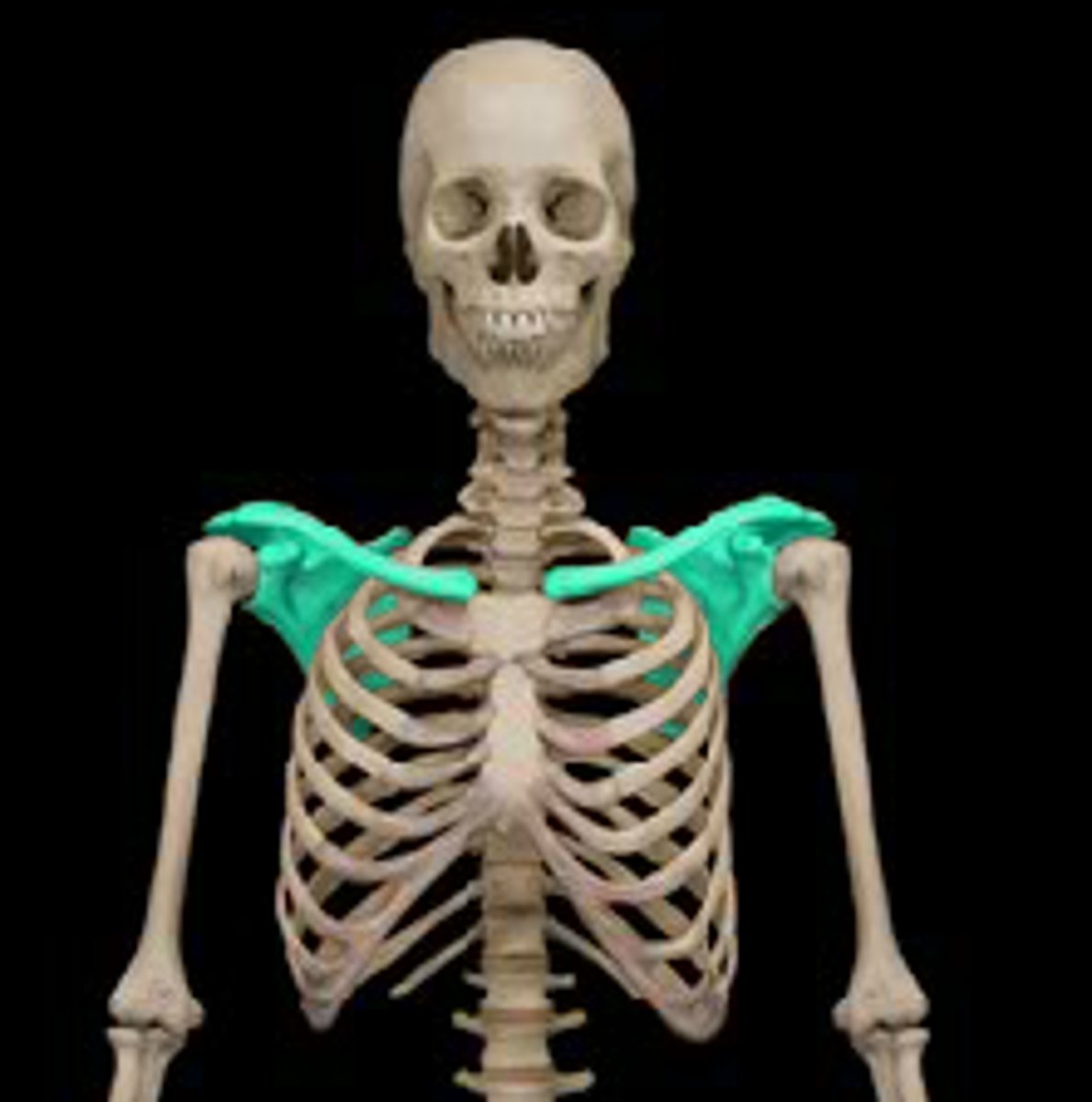
pelvic girdle
Paired hip bones
Joined anteriorly at the pubic symphysis, posteriorly at the sacrum
pelvic girdle
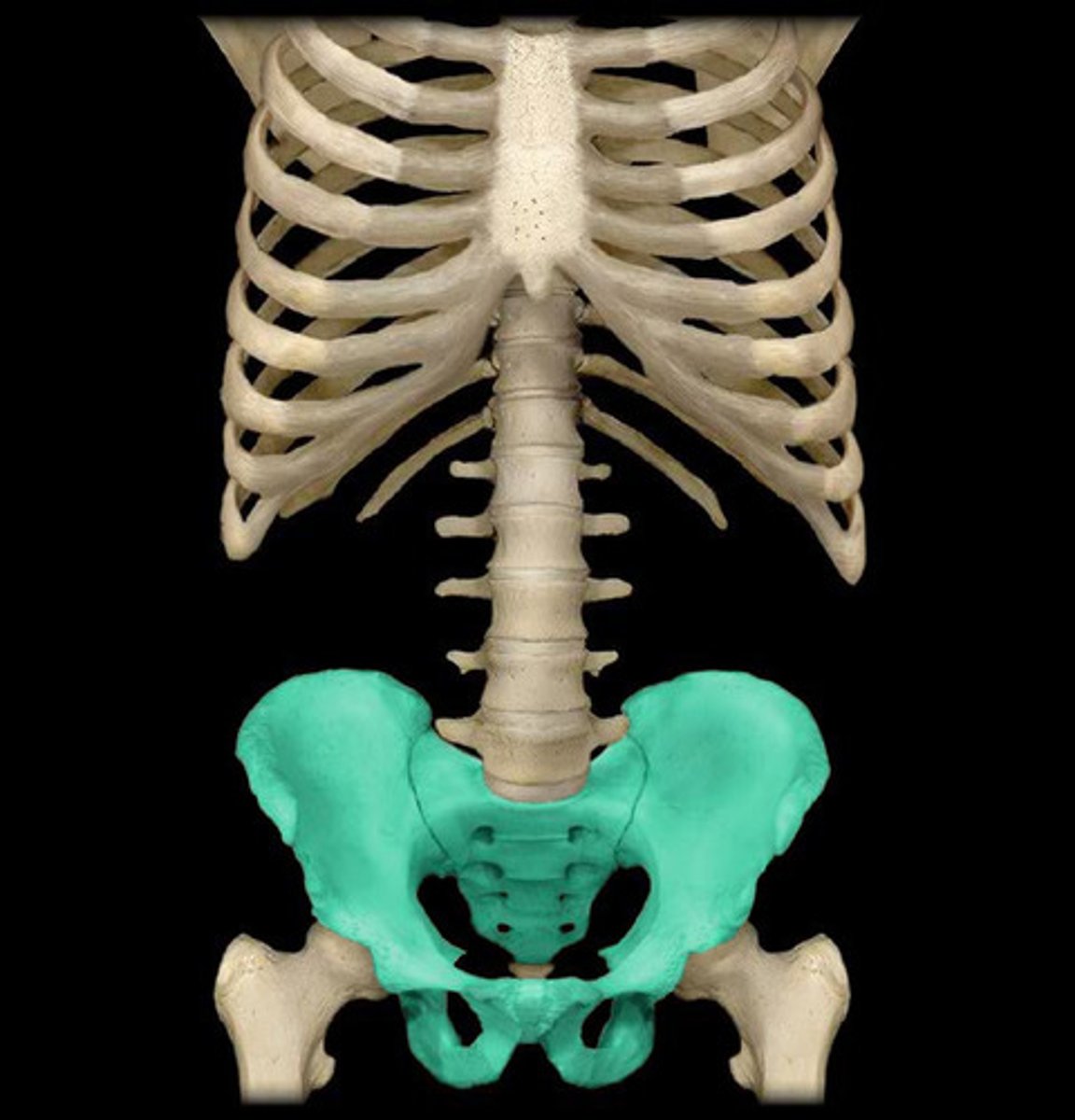
thoracic vertebrae
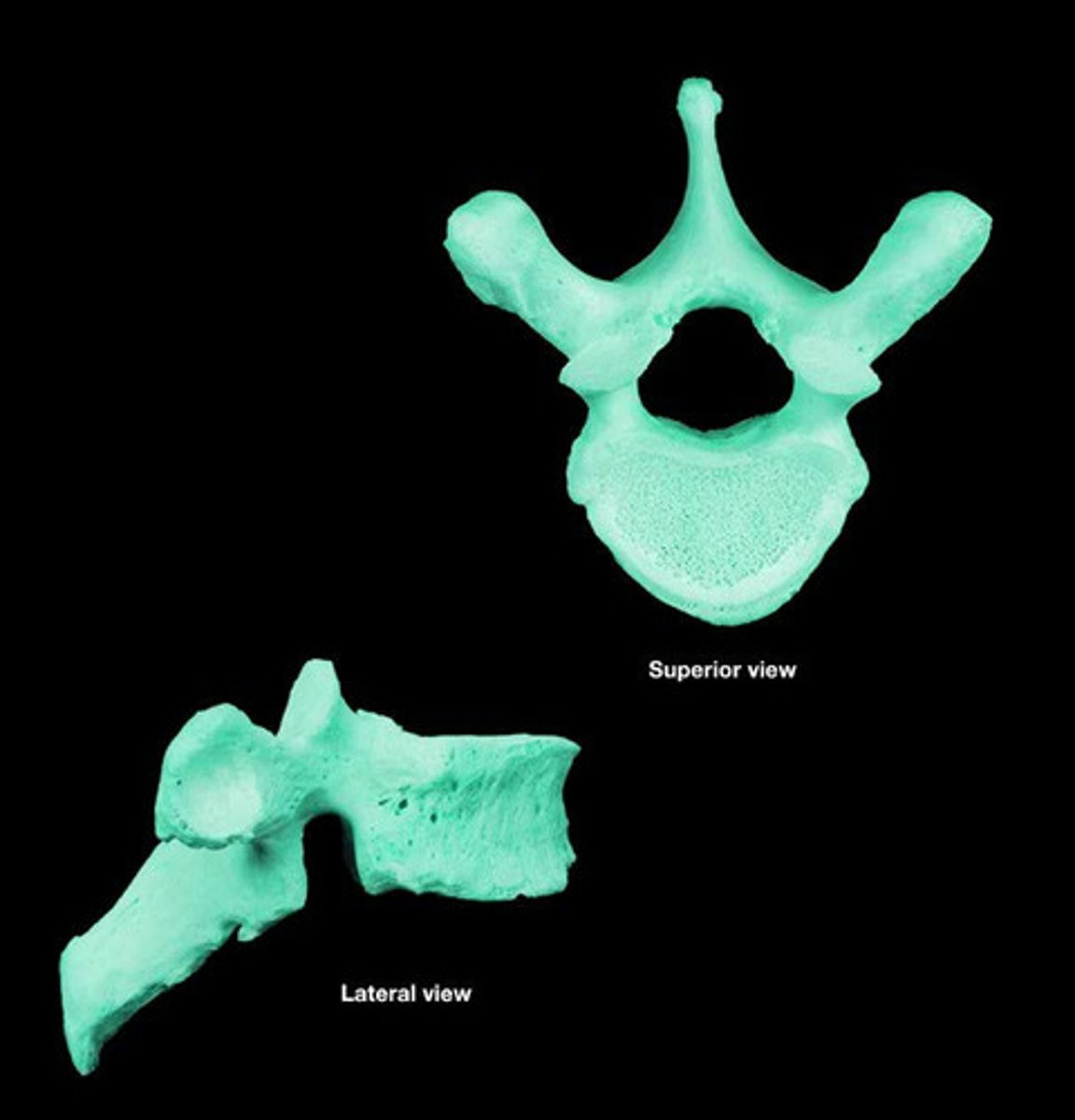
Thoracic Vertebrae-Rib Articulation
Superior Costal (Demi) Facet of inferior vertebrae (#4)•
Inferior Costal (Demi) Facet of superior vertebrae (#2)• Transverse Costal (Demi) Facet of inferior vertebrae (#9)
sternum
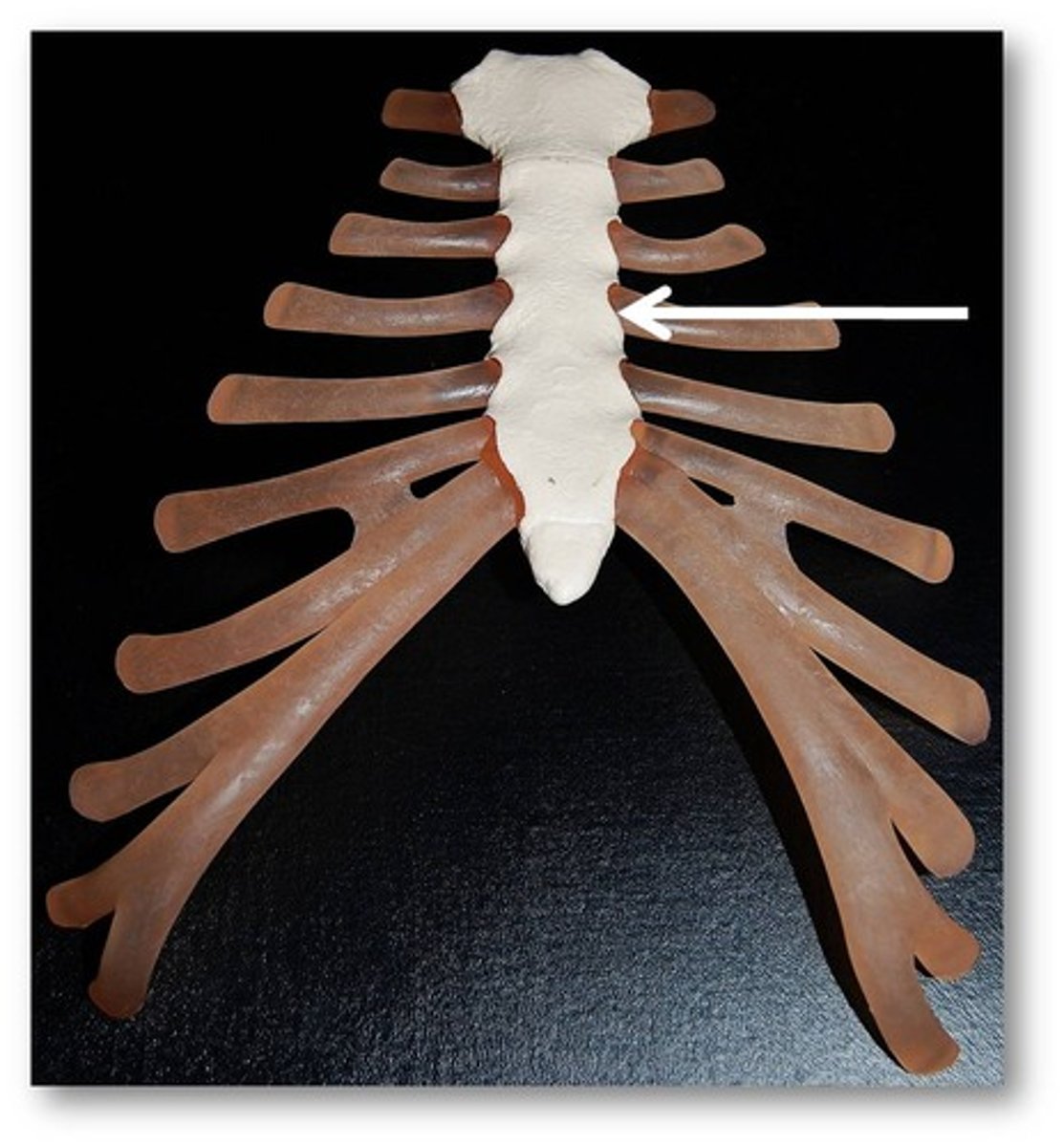
angle
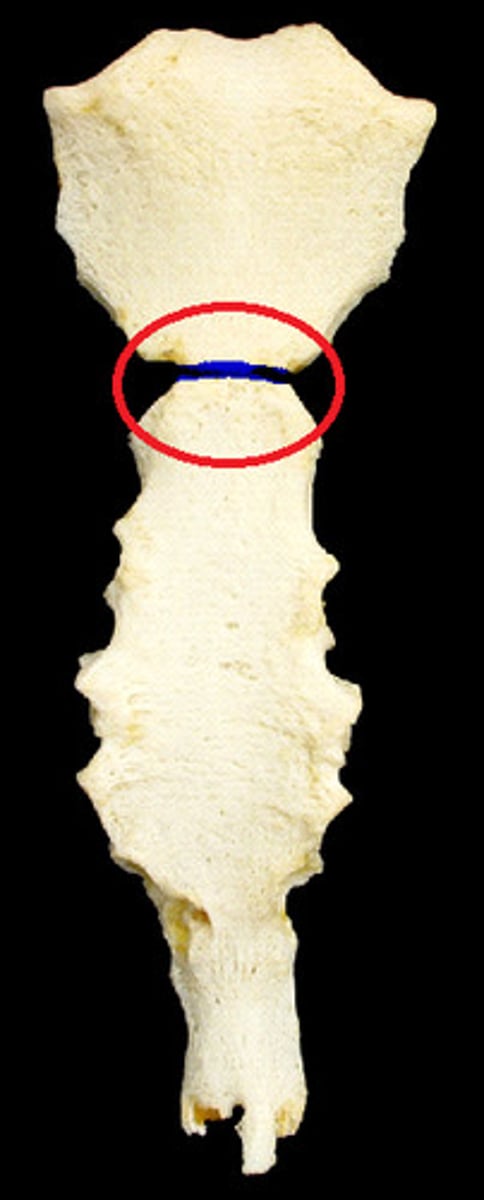
visceral lining
covers lungs
parietal lining
covers thoracic wall
diaphragm
Separates the thorax from the abdomen•
Central tendon is asheet-like tendon•
Fibers of ________ pull on central tendon•
_________ is pulled downward/flattens during inspiration•
Lungs are expanded in the vertical dimension
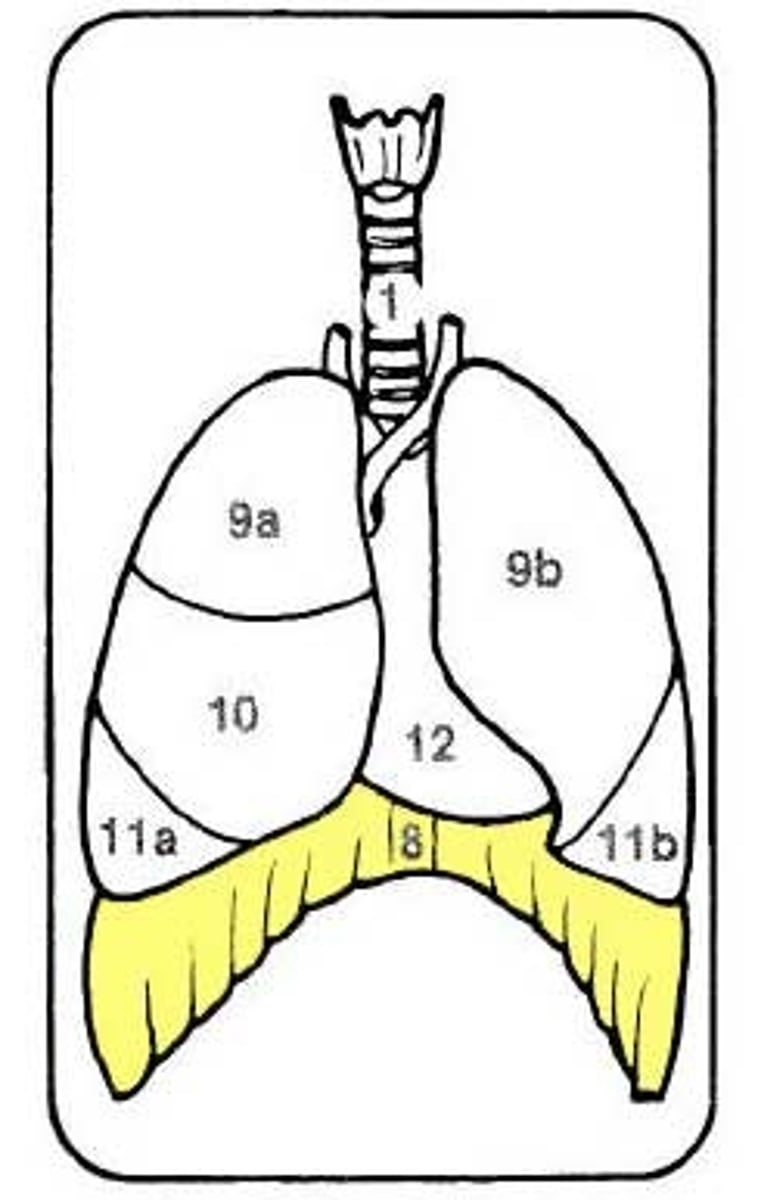
external intercostal
Inferior surface of superior rib -> superior surface of rib below•
Expand the ribcage
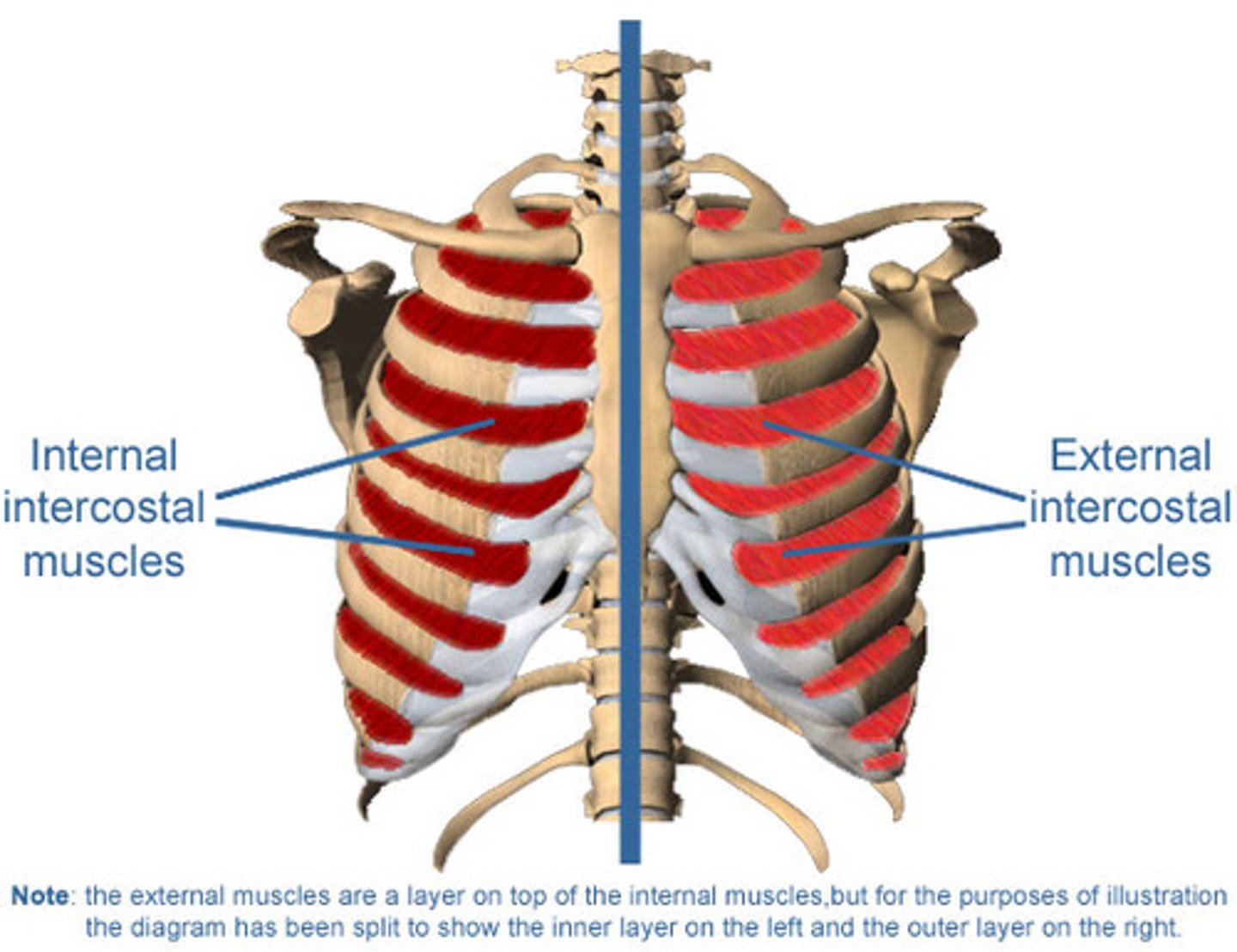
internal intercostal, interchondral portion
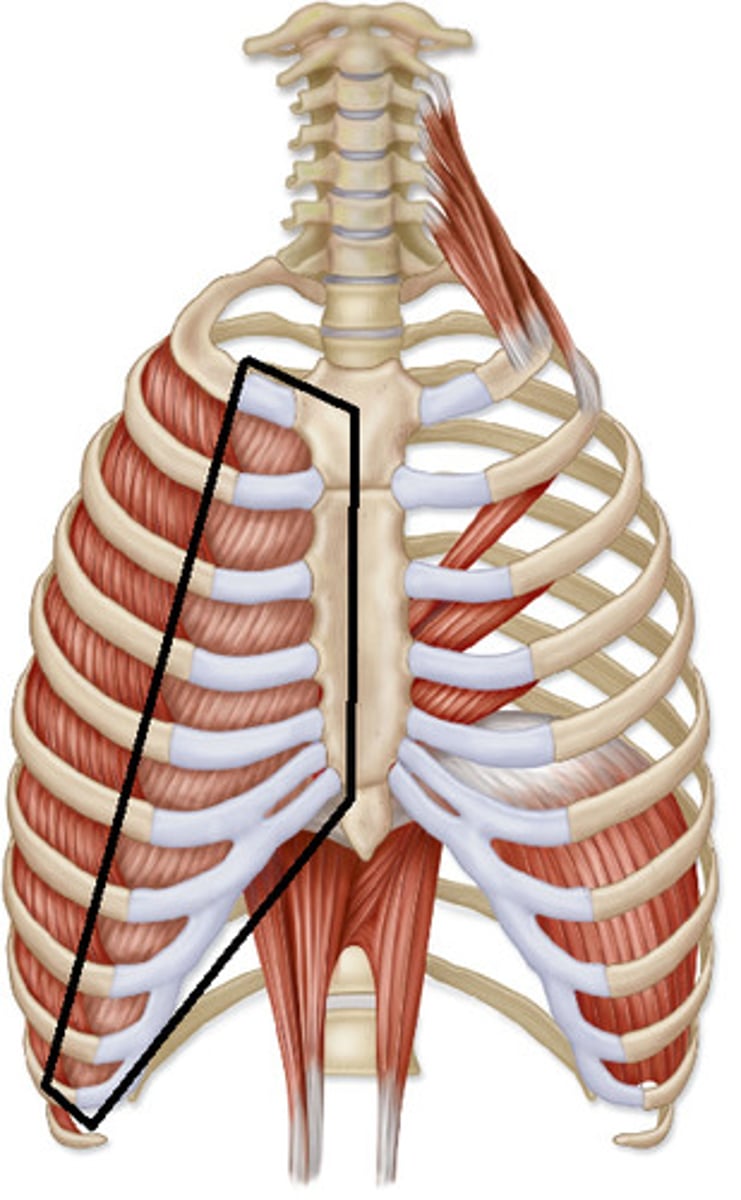
levatores costarum
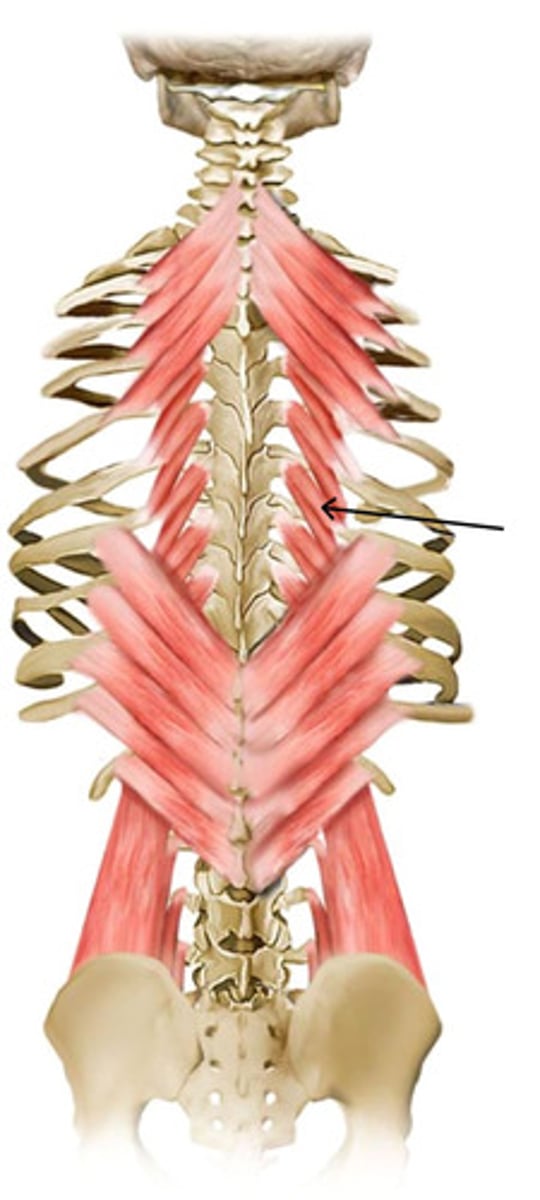
serratus posterior superior
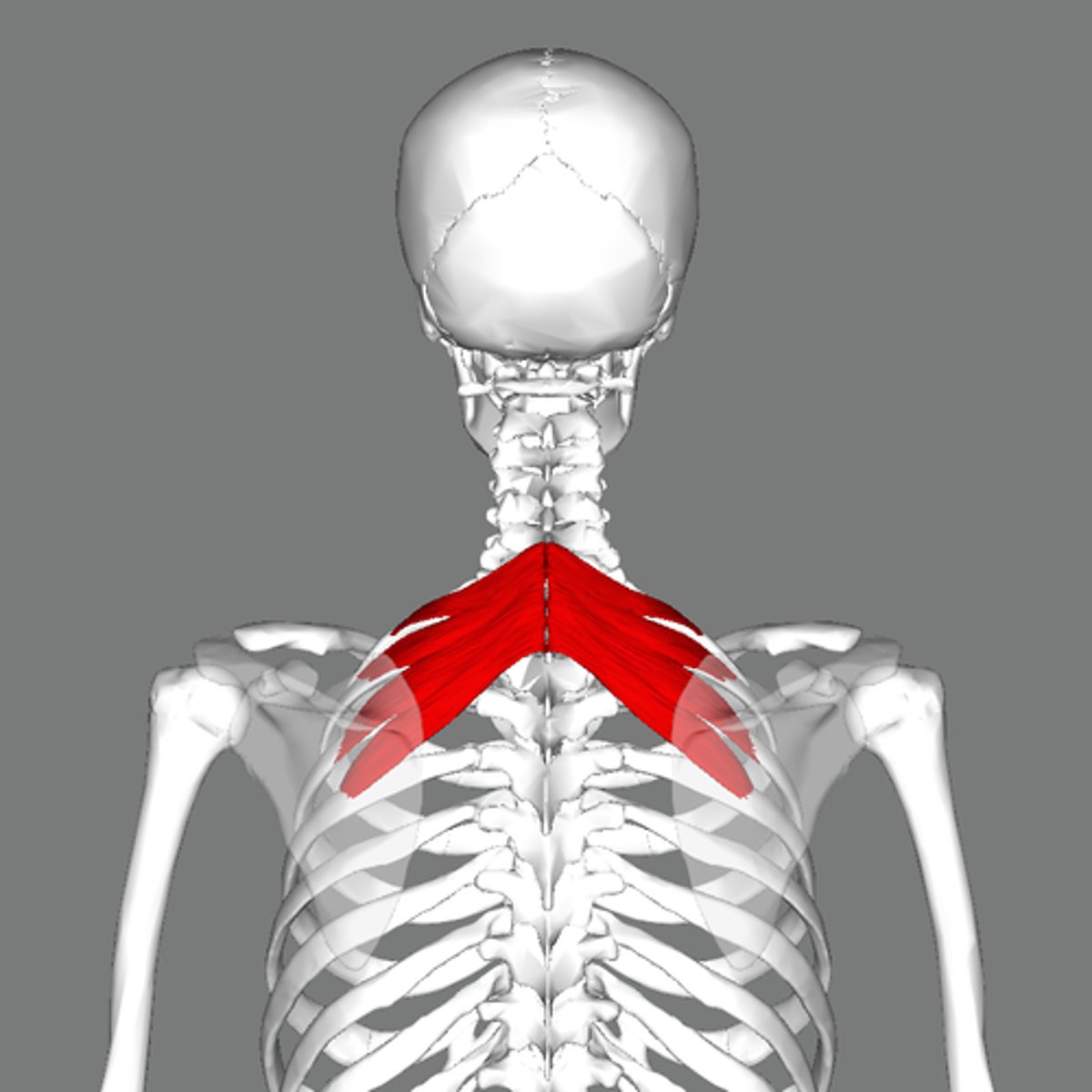
sternocleidomastoid
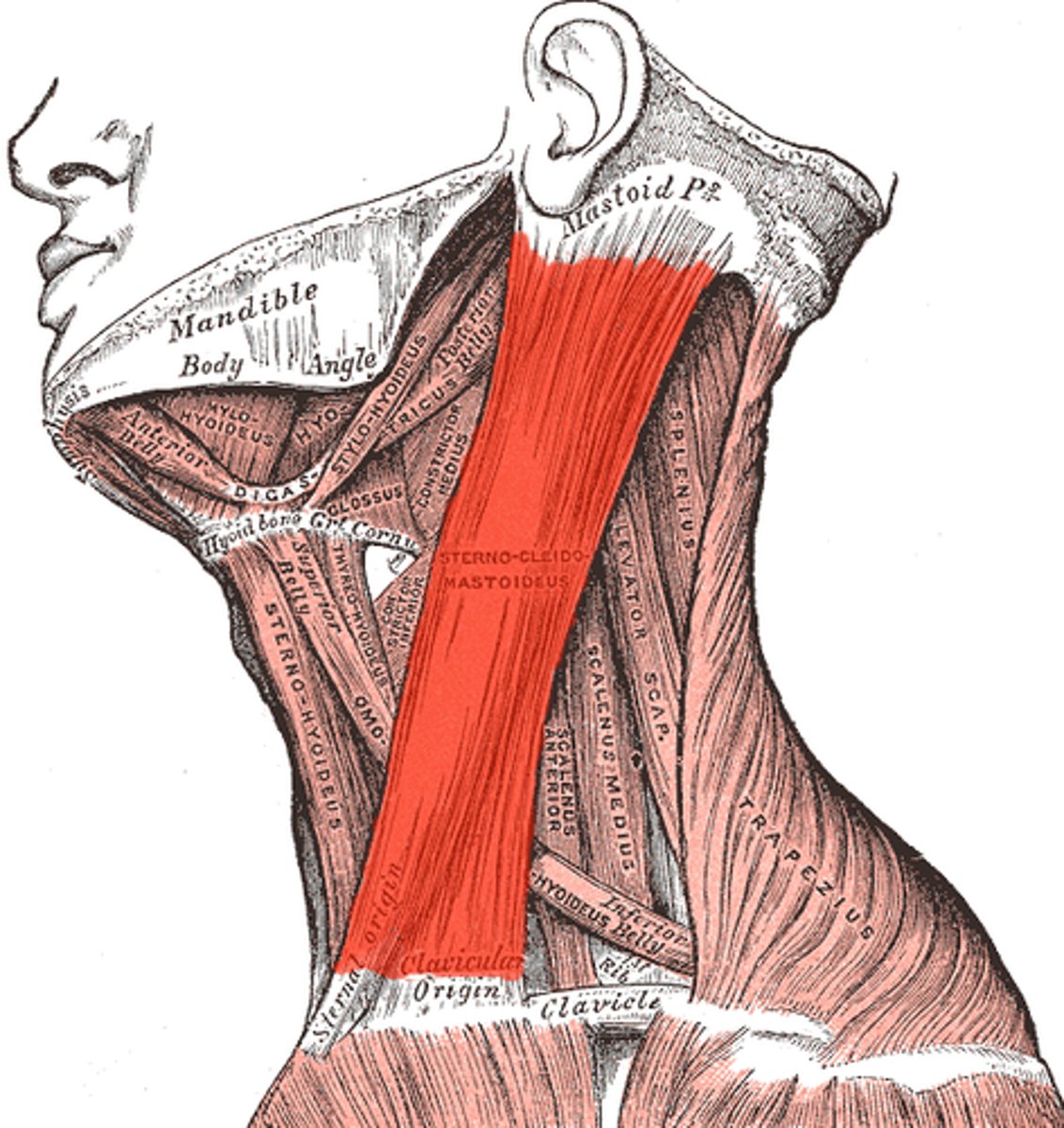
scalenes
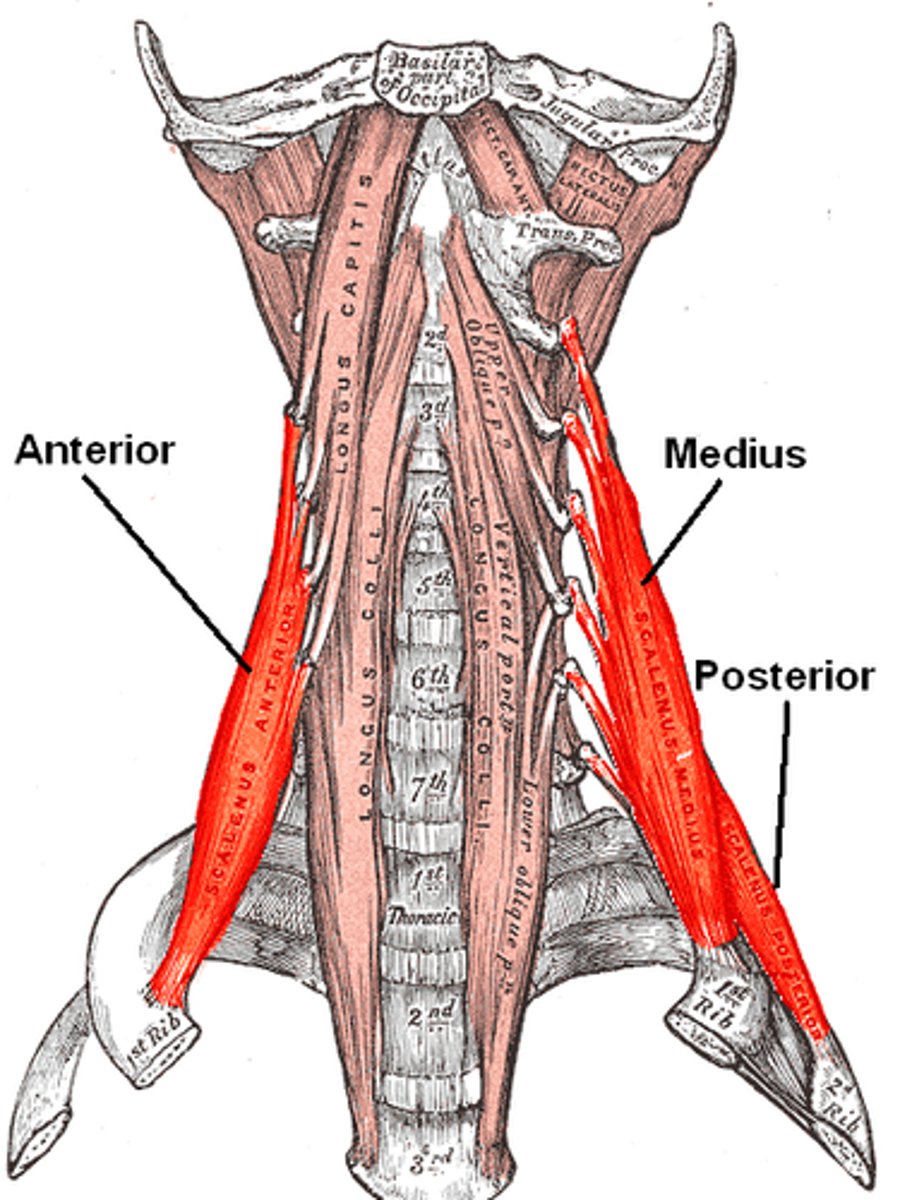
trapezius
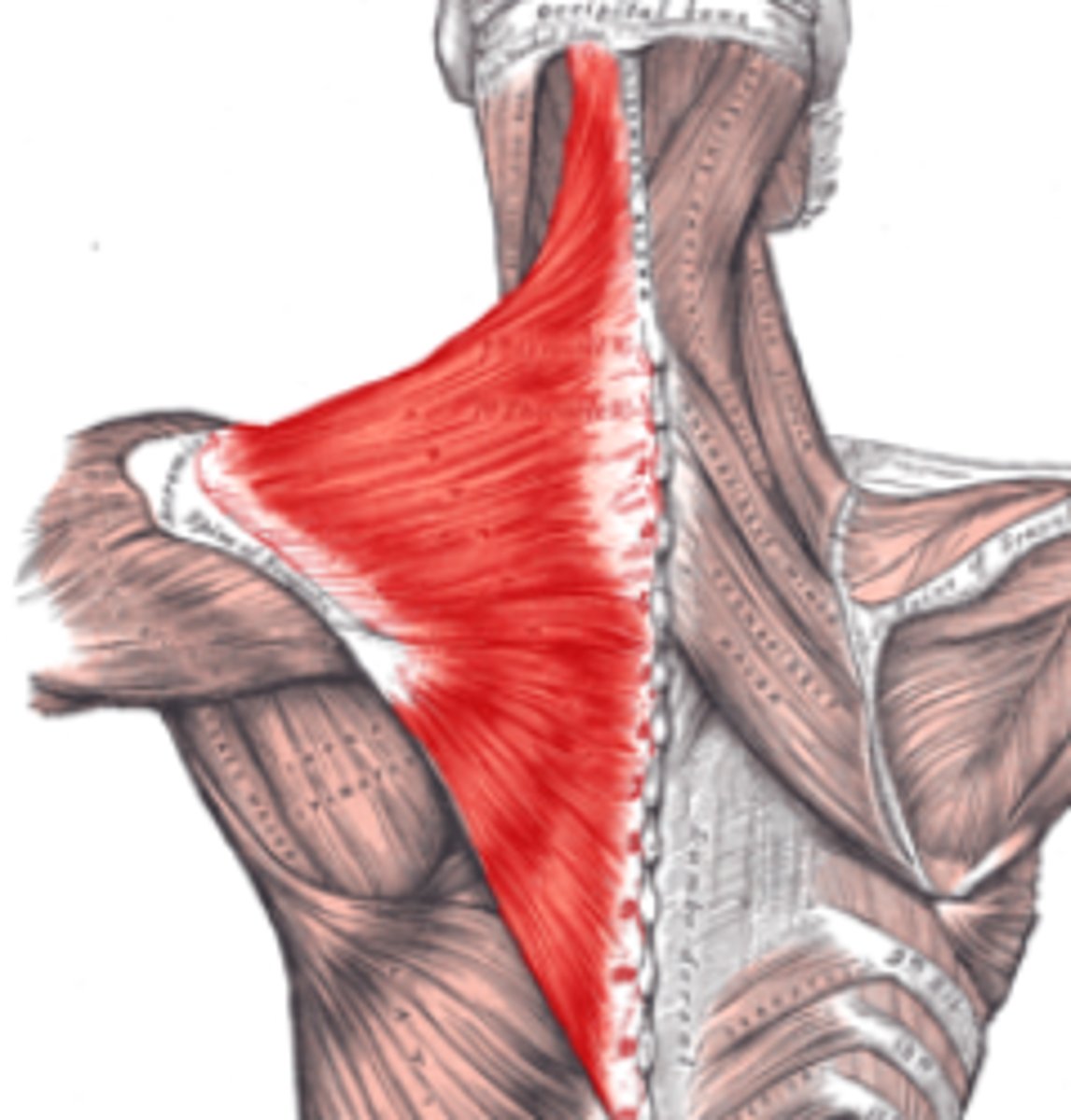
pectoralis major
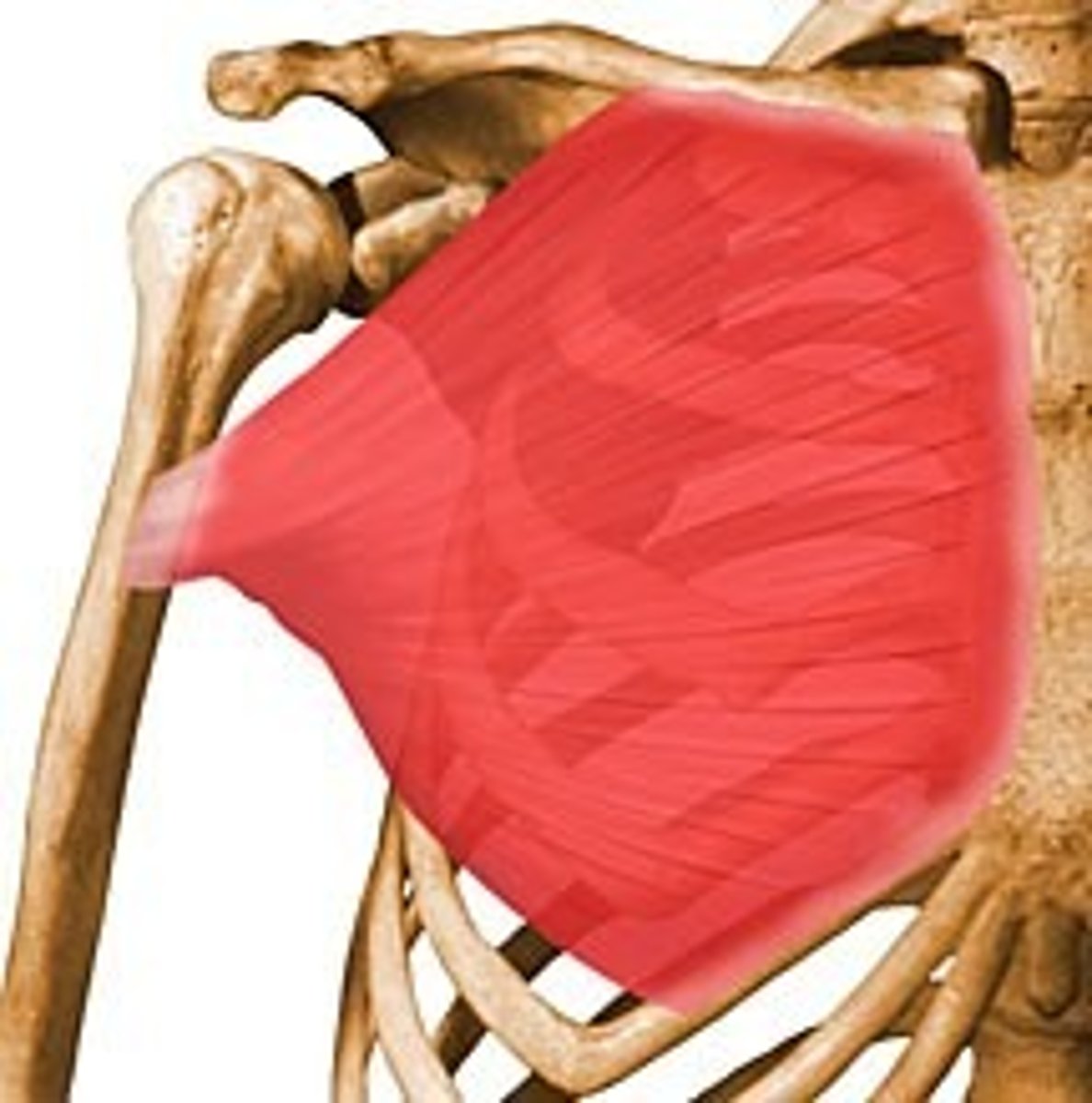
serratus anterior
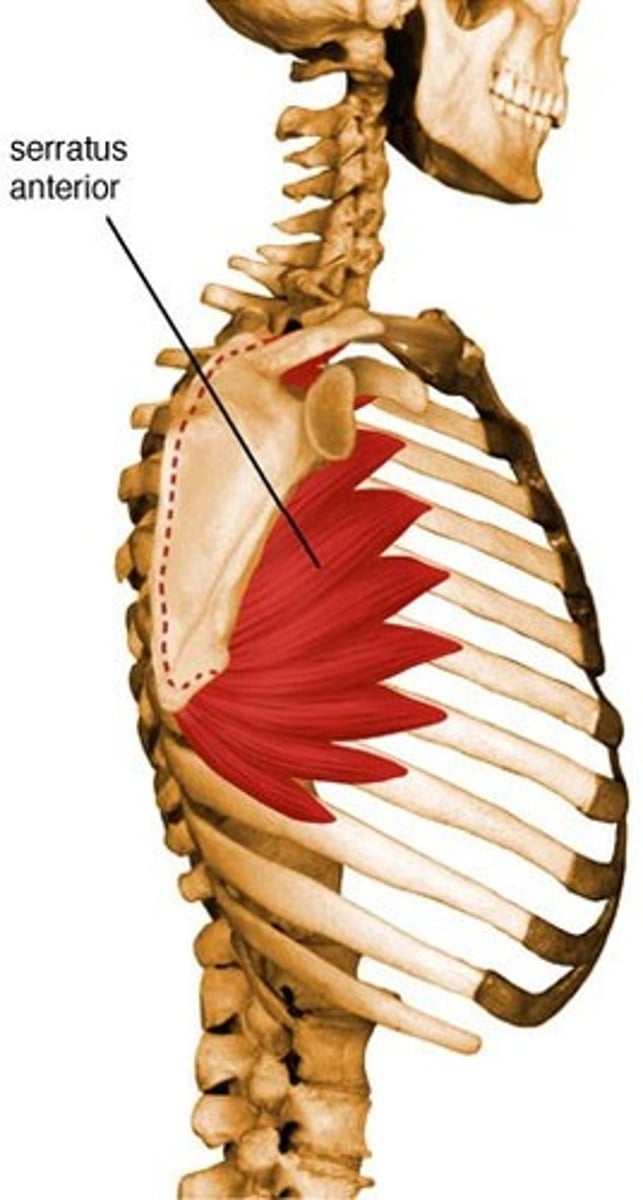
internal intercostals, interosseous portion
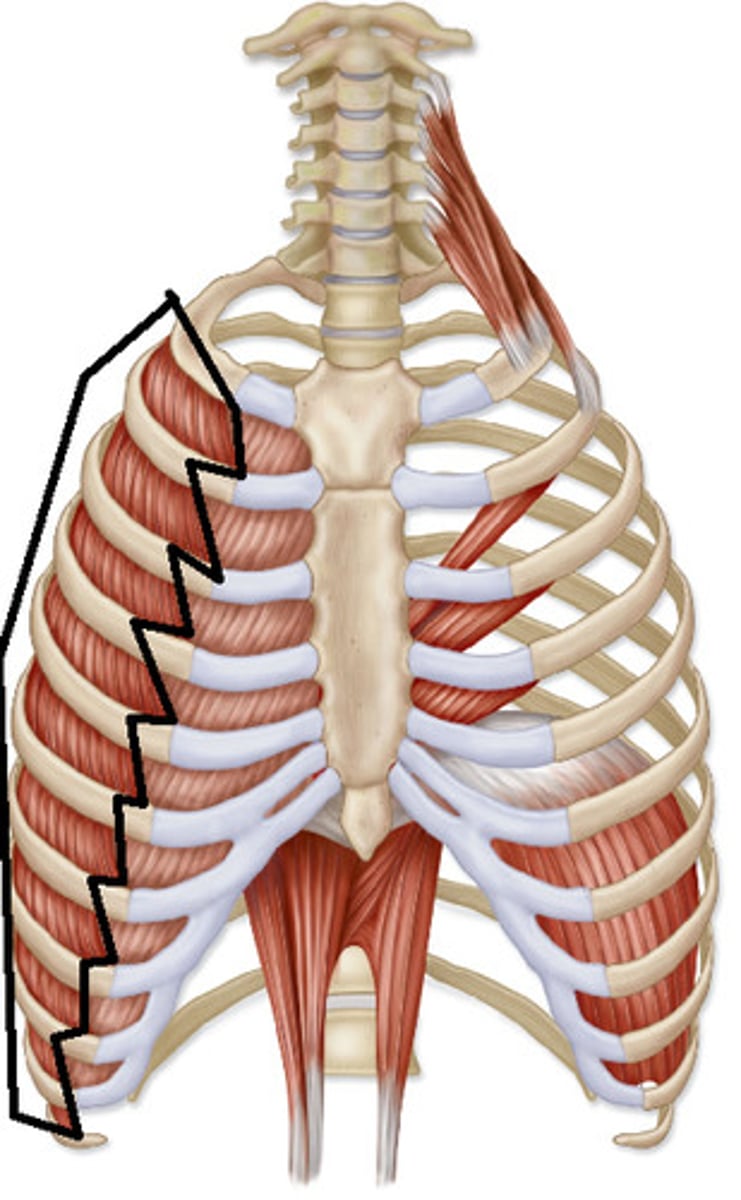
transversus thoracis
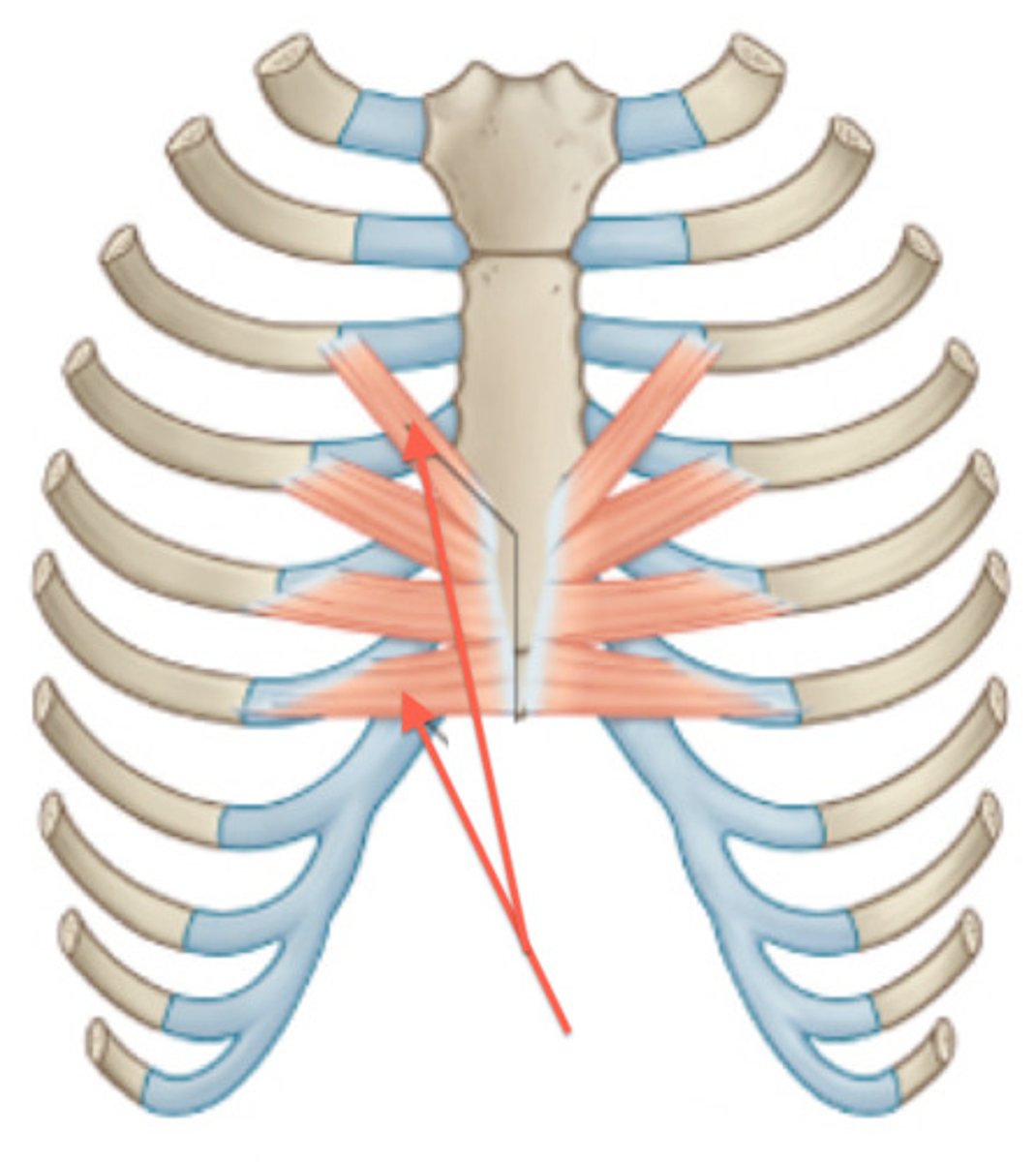
serratus posterior inferior
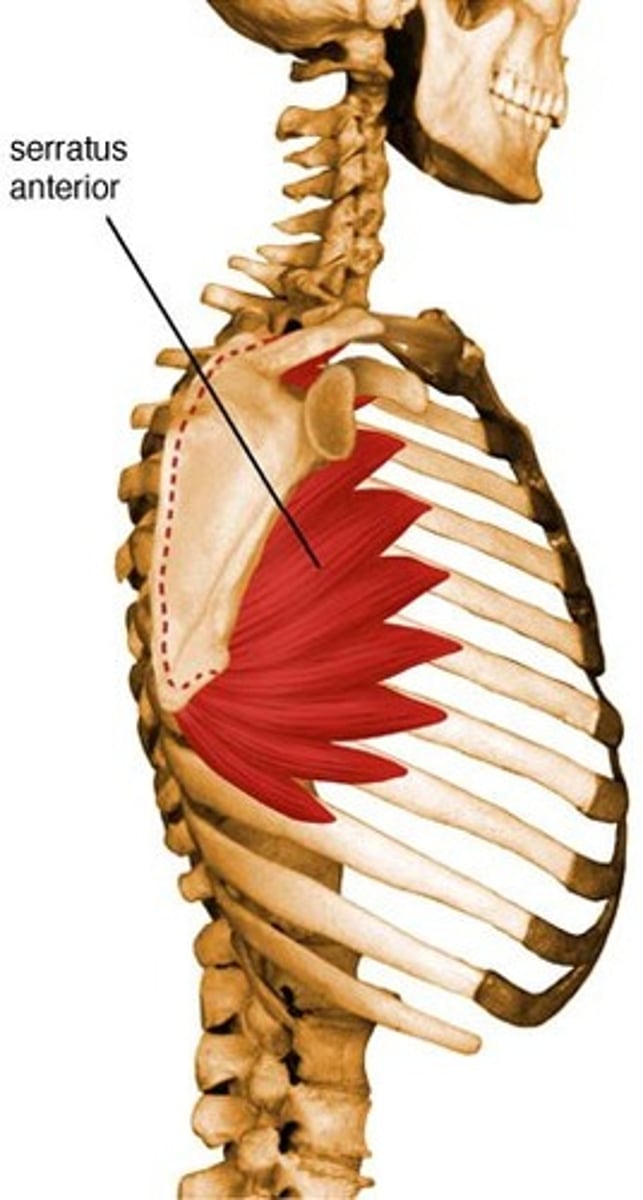
transversus abdominis
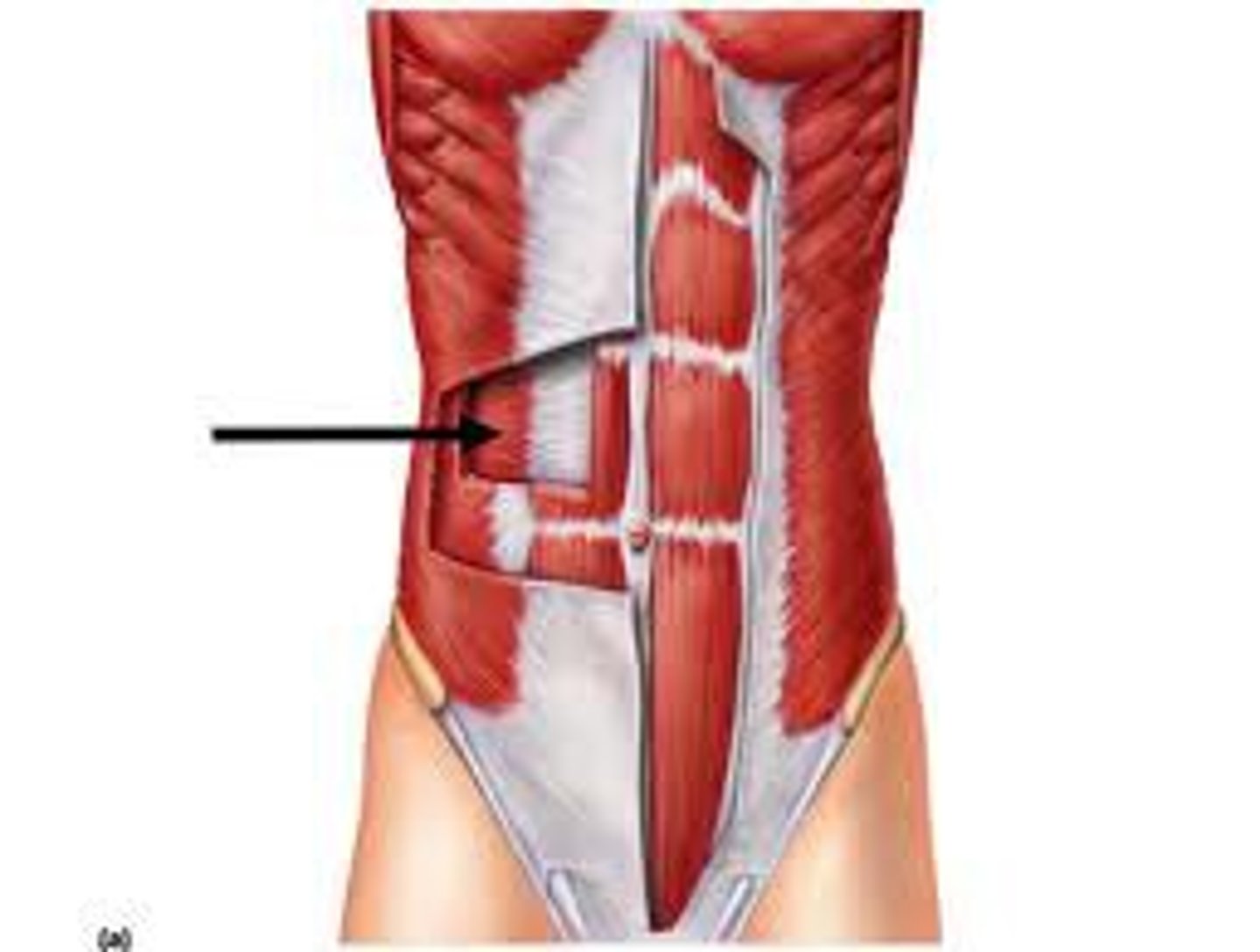
internal oblique abdominis
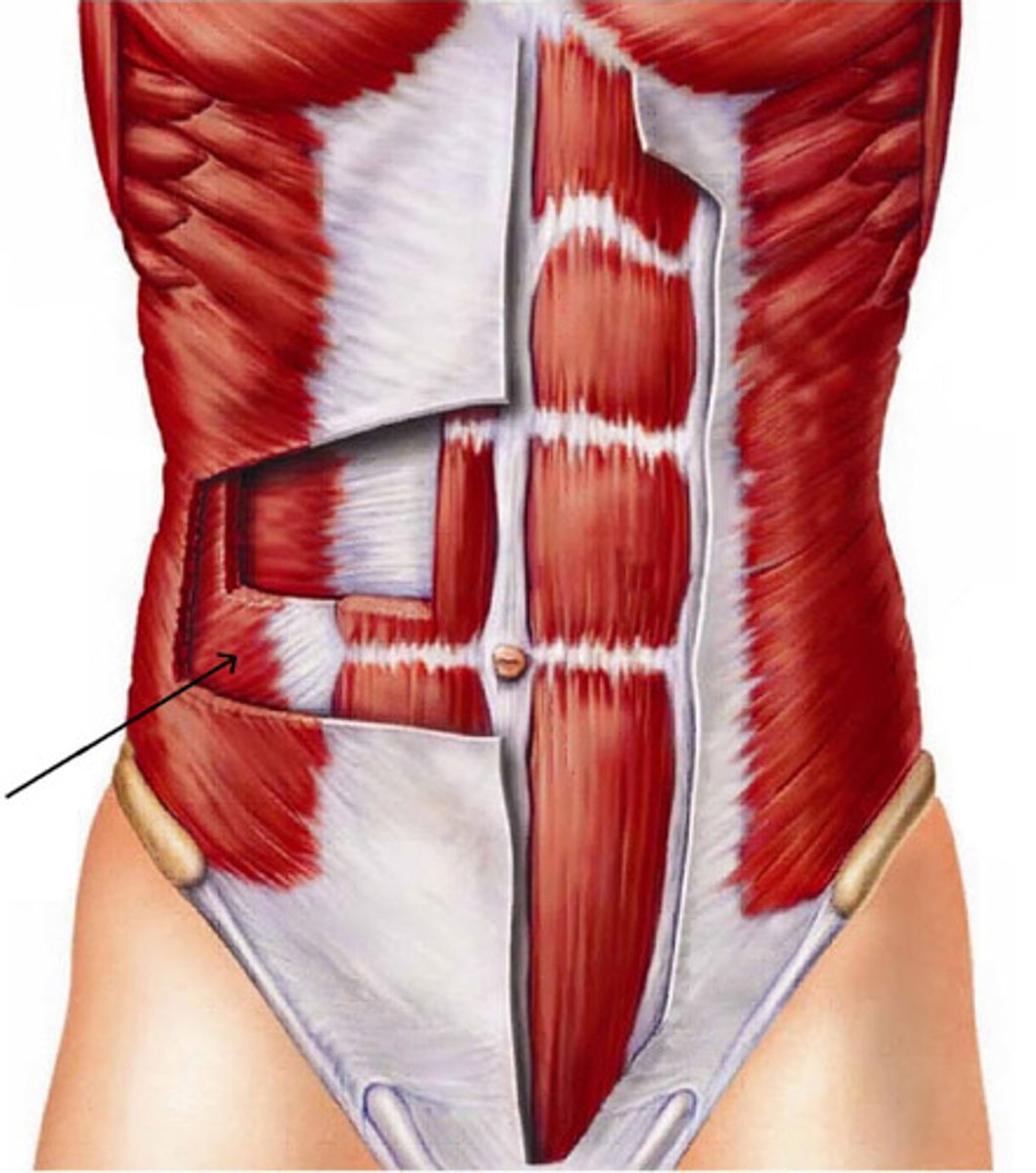
external oblique abdominis
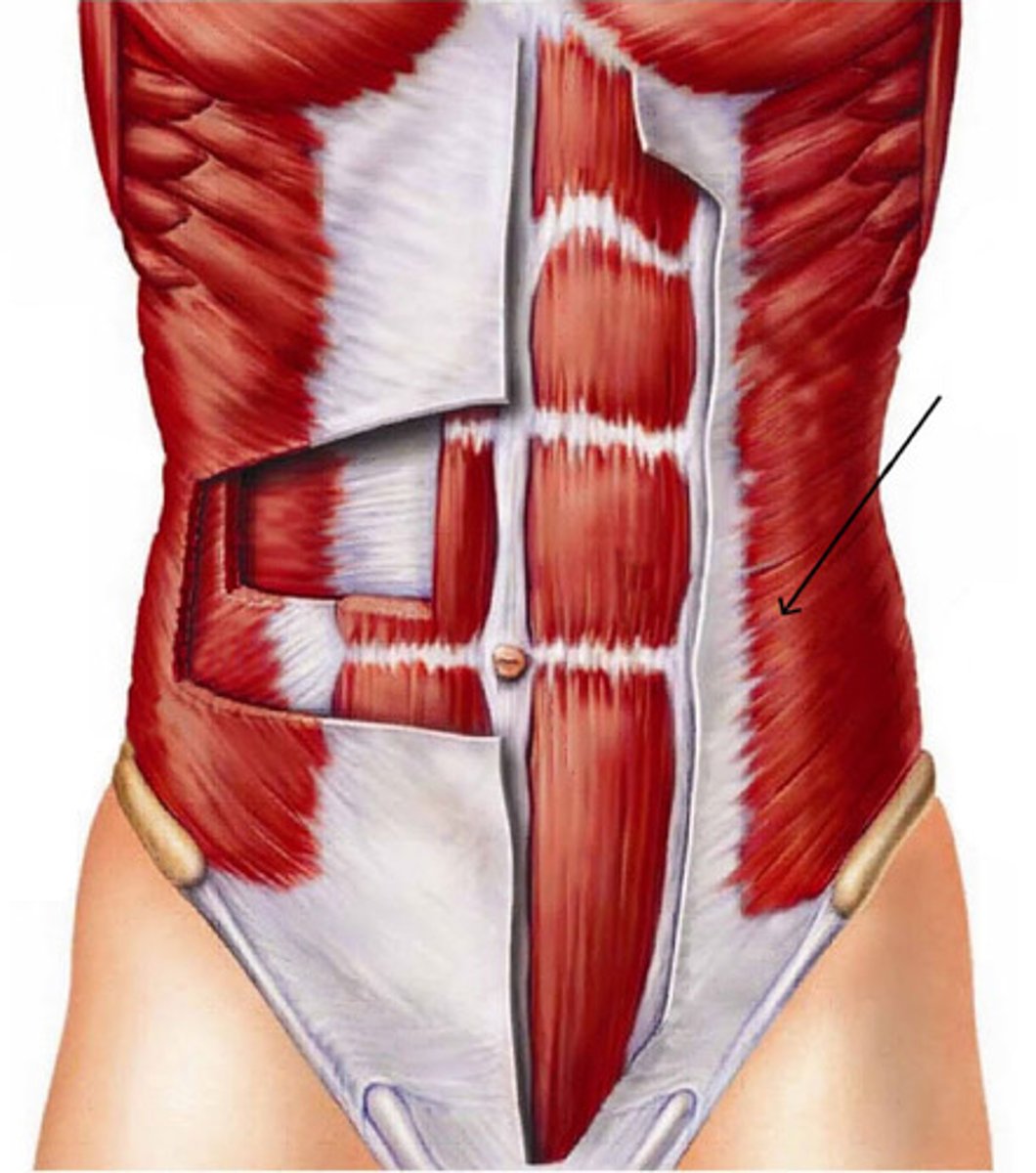
rectus abdominis
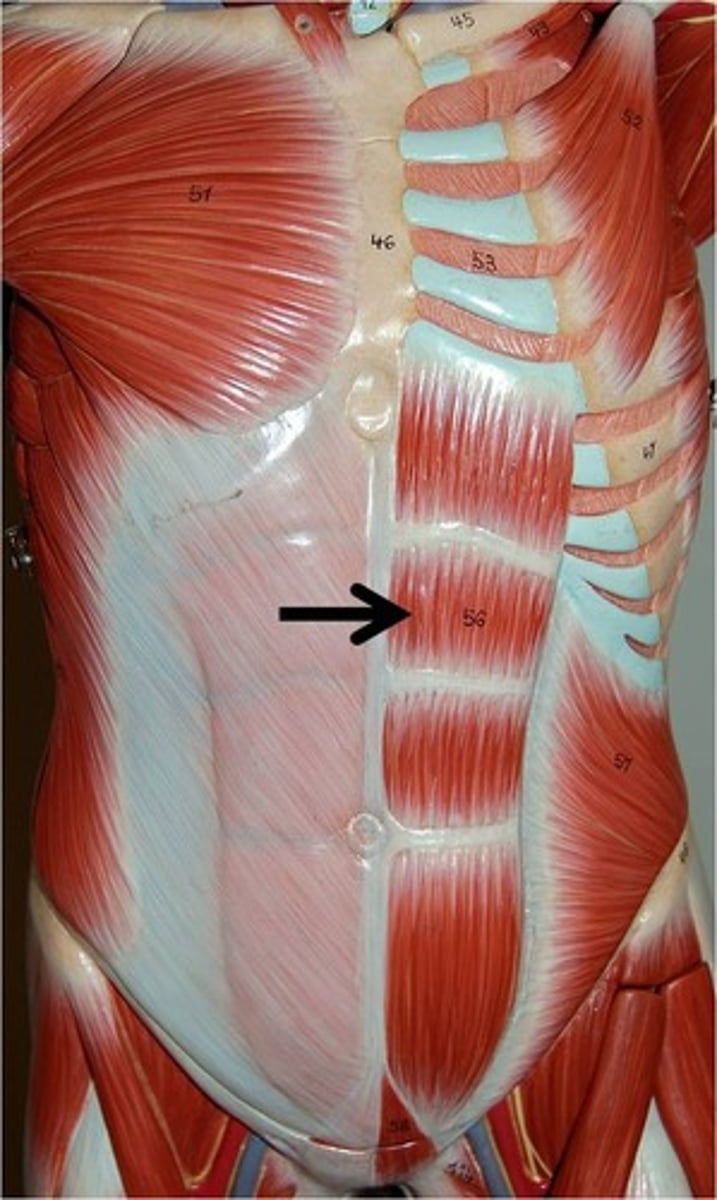
tidal volume
Volume we breathe in during respiratory cycle
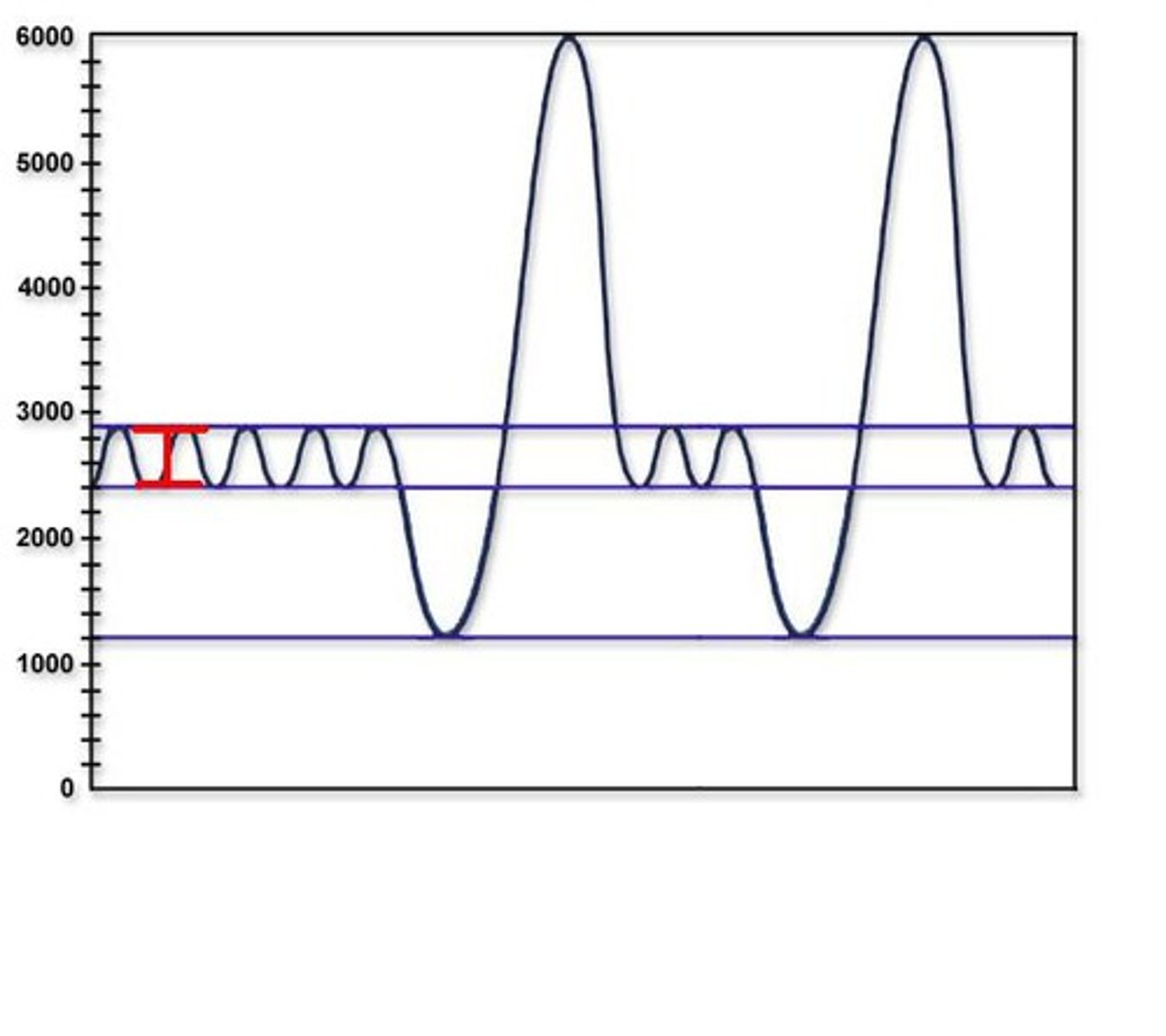
inspiratory reserve volume
air inspired beyond tidal volume
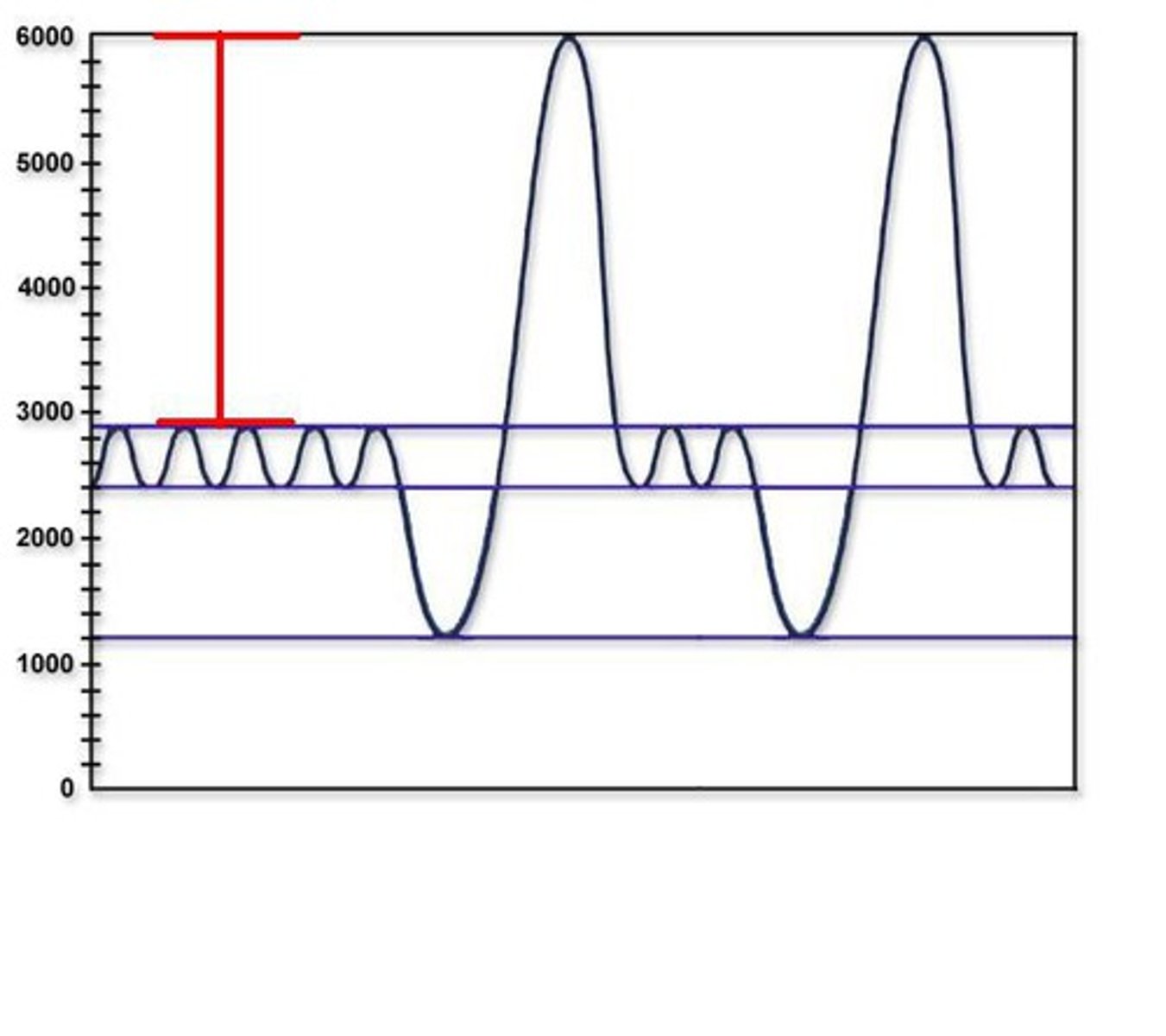
expiratory reserve volume
air expired beyond tidal volume

residual volume
volume remaining in lungs after max exhalation

dead space air
air that cannot undergo gas exchange; includes residual volume
vital capacity
Volume of air that can be inspired after a maximal expiration•
Capacity that is available for speech•
IRV + ERV + TV•
About 4,000 mL on average
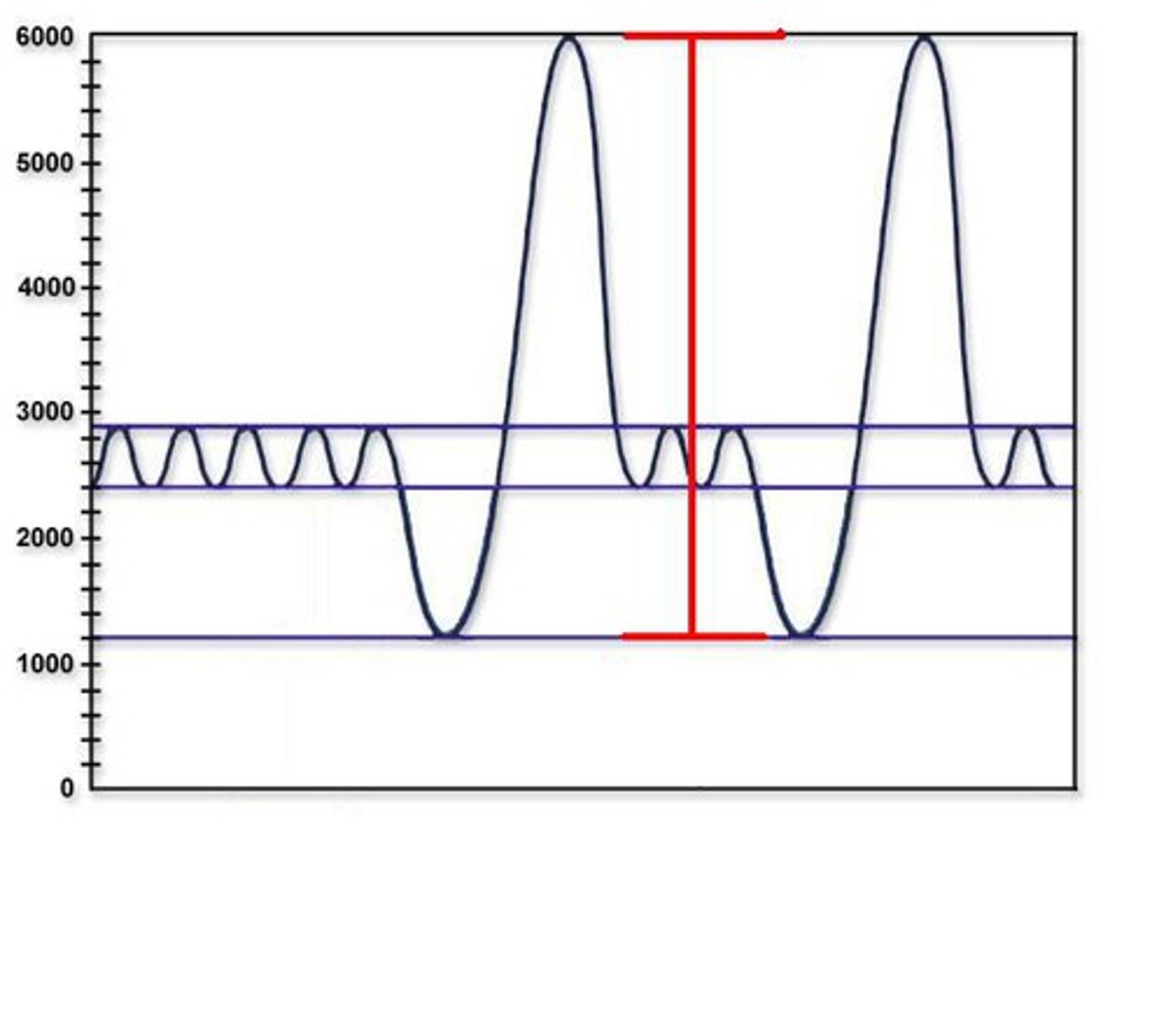
Functional residual capacity (FRC)
Air that remains in the body after passiveinspiration•
ERV + RV
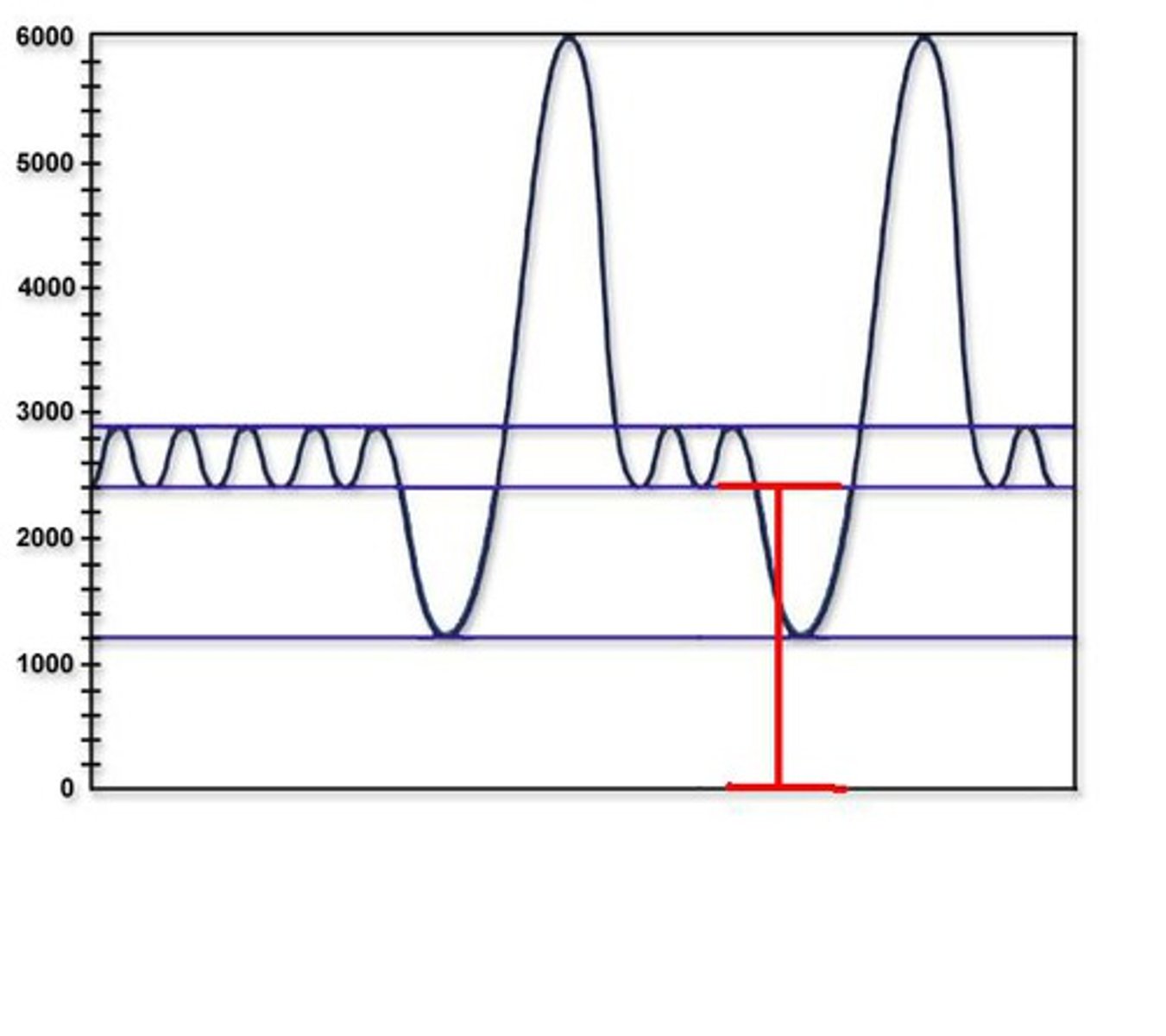
total lung capacity
Sum of all lung volumes•
TV + IRV + ERV + RV•
About 5,100 mL
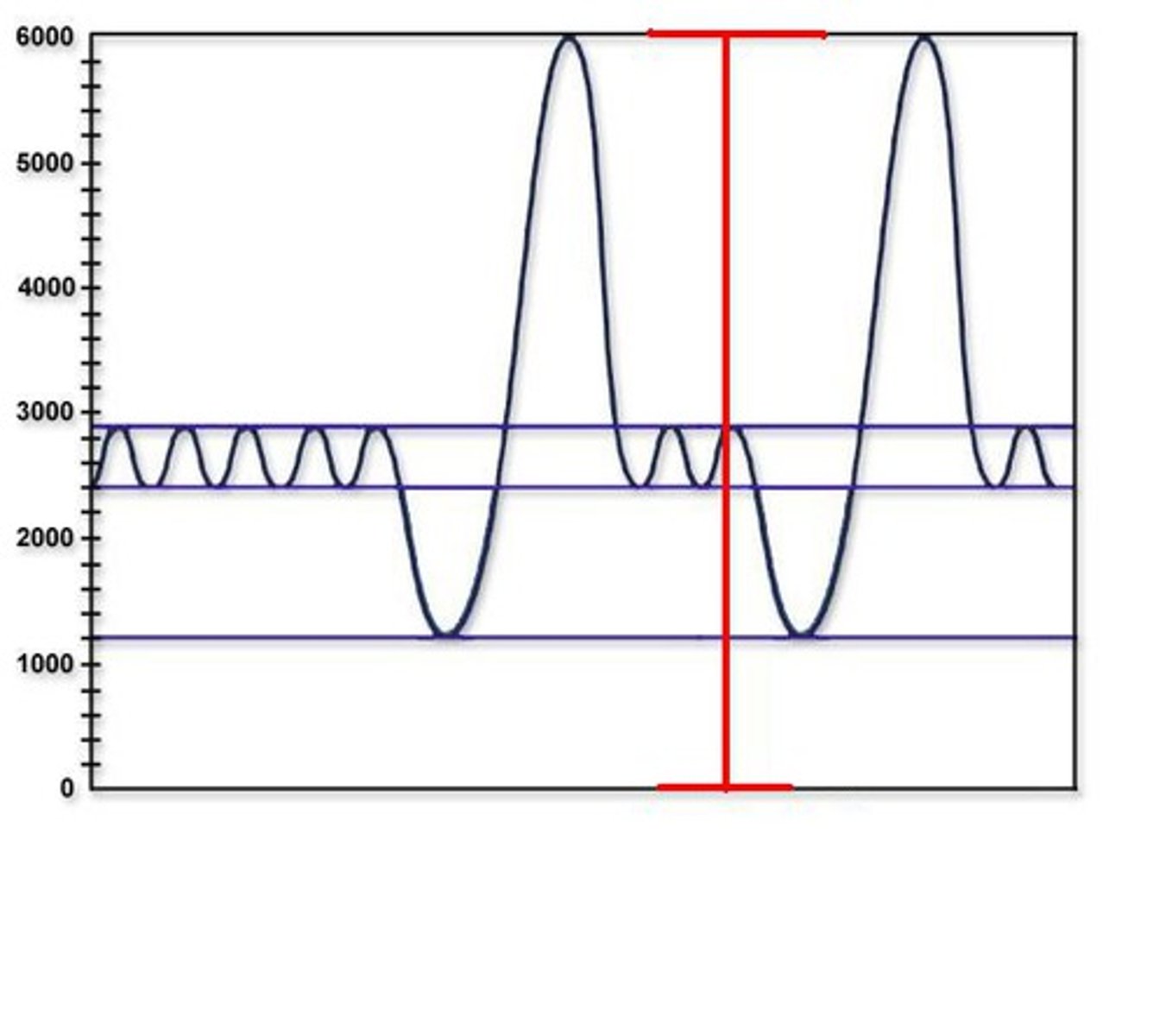
inspiratory capacity
Volume that can be inspired after tidal expiration•
TV + IRV•
About 3,000 mL